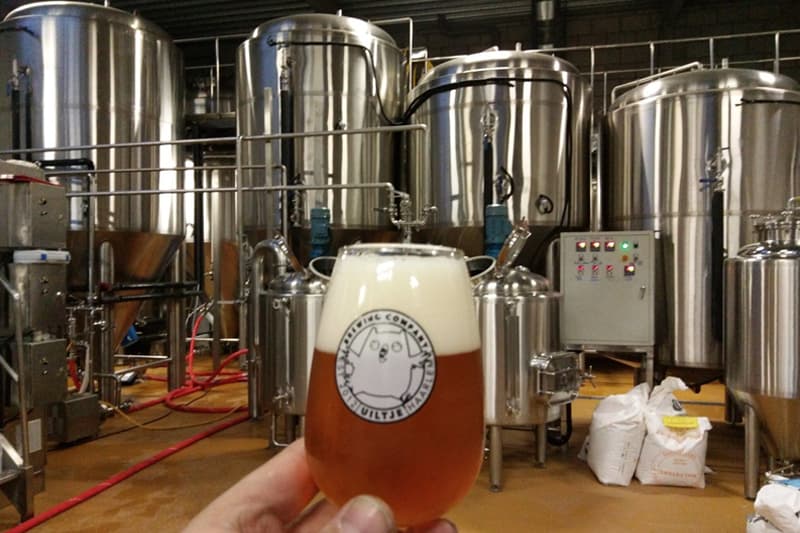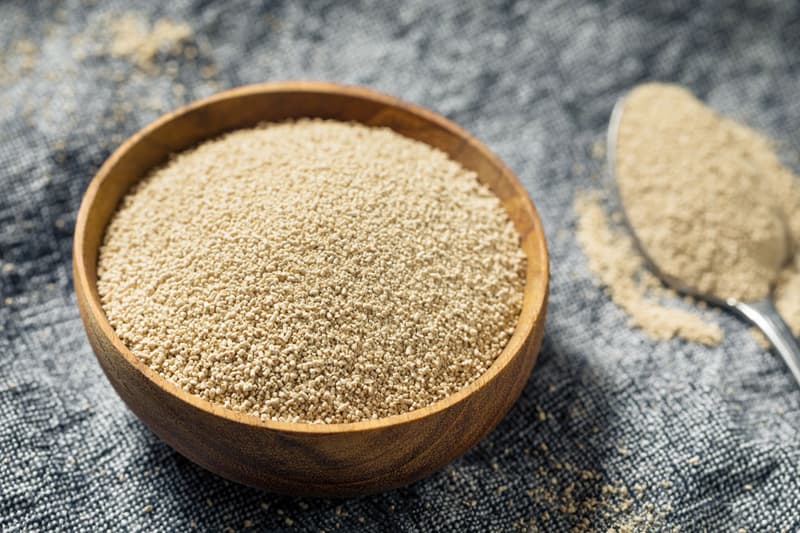Choosing the appropriate yeast for brewing is crucial because it highly determines the taste, aroma and general attributes of beer. This guide will examine various aspects of selecting beer yeast– from differentiating between various strains to tips on how to maintain yeast health and ensure its productivity.
Key Takeaways
- Knowing different types of yeasts and their characteristics can greatly enhance the flavor and aroma of your beer.
- It is important that you choose a yeast which matches specifically with your type of beer so as to have the right taste and quality.
- Fermentation temperature, desired flavor profile, yeast performance are among other concerns taken into account when selecting the correct yeast for brewing.
- Proper storage conditions should be observed as well as maintaining optimal temperature during fermentation if one wants healthy yeast for successful brewing projects.
- Innovation in beer flavors may result from mixing wild yeasts or using different strains together intentionally.

Understanding Yeast Varieties
1、Yeast Types and Their Characteristics
Especially based on genetics and observable characteristics such as fermentation temperature or flocculation, yeasts are classified into strains. It is important that you understand these traits before choosing a strain that suits your beers best. In fact, now even picking out a yeast can be just as exciting as trying out a new experimental hop.
2、Impact of Yeast on Beer Flavor
The choice of yeast has direct impact on the flavor profile of the beer. The role played by yeasts are critical whether an individual intends to have a dry hoppy product or sweet malty one. There is room for variety when it comes to using distinctive yeasts leading to distinct tastes and smells respectively.
3、Experimenting with Different Yeasts
Do not fear experimenting with different yeast cultures. Some brewers even blend two or more yeasts species in order to bring qualities from both resulting in complex beers (Cervin & Herold 2011). By doing this, they keep coming up with new innovative flavors for their beers hence they are more creative.
Matching Yeast to Beer Style
1、Style-Specific Yeast Selection
Most yeasts have been designed for particular beer styles making it simple and easy to select yeast by those who know their style. For instance using Belgium yeast in a Witbier is common. Nevertheless, don’t be afraid of experimenting with blending yeasts to achieve unique ones.
2、General Guidelines for Lager and Ale
When brewing general styles like lagers or ales, the selection can be more complex. Here are some guidelines to help you choose:
- Lagers: Opt for cold-active yeasts that give clean, crisp flavors.
- Ales: Choose strains that operate within a wider range of temperatures contributing towards fruity/spicy notes in the brew.
3、Experimentation and Blending
The brewing process should embrace experimentation. Trying out different yeasts per recipe leads to amazing variations in flavor and aroma. Brewers combine two different varieties of yeasts together so that they are able to bring about complexity into their products by taking advantage of what each has got.
Factors to Consider When Choosing Yeast
1、Fermentation Temperature
The temperature at which fermentation occurs matters because it affects both yeast activity and the final taste profile produced by the beer. Different yeast strains thrive well under different temperatures hence the right choice determines how fermentation will go on.
2、Desired Beer Profile
It is important to choose the best type of yeast if one is interested in achieving certain beer profile (White & Zainasheff 2010). The flavor, aroma, transparency and even solidness of beer may all depend on yeast alone. As such, brewers must determine which characteristics are most important for them when it comes to their particular style of beer then try and find a strain which can deliver these traits effectively.
3、Yeast Performance and Reliability
Yeast is an aspect of brewing that should be considered in regard to its reliability and performance. The yeast choice must also be one that goes with the style and flavor as well as having proved itself effective over time. There are other factors such as viability, fermentation speed and flocculation that need to be considered so as to ensure uniform results across batches.
The Role of Yeast in Brewing
1、From Wort to Beer: Yeast’s Crucial Role
Fermentation begins when wort turns into beer, a process heavily dependent on yeast, the tiny microorganism. As this happens, yeast uses up sugars derived from barley, releasing ethanol and carbon dioxide during the process. How efficient it is and what nature it has define the final character of beer.
2、How Yeast Affects Aroma and Body
A change in yeast can greatly affect aroma or body of a beer. In some cases yeasts add esthers which impart fruity, bready or spicy flavors making beer complex. Other types may result in lighter bodies which have cleaner tastes thus increasing dominance of hops and malts.
3、Choosing Yeast for Desired Clarity and Finish
If you choose different strains of yeast they will affect the clarity as well as finish of a beer. Some yeasts cause floculation enabling brighter beers while others may lead to a cloudier substance. The level at which the yeast attenuates will determine how dry or sweet a finish is hence important in realizing desired end product.
Practical Tips for Selecting Yeast
1、Assessing Yeast Viability and Health
To make sure fermentation goes well; evaluating viability and health yeast cells is necessary. Pitching should only take place after activity levels have been determined using a yeast starter solution that can help reveal any issues regarding possible fermentation problems.
2、Understanding Yeast Labels and Descriptions
Essential information about strain such as fermentation characteristics, flavor profile are given on labels attached to yeast products. To fit the yeast to your brewing needs, it is important for you to read and understand this information.
3、Managing Yeast During Brewing
The right beer profile can only be achieved when yeast is properly managed during brewing. This encompasses keeping good oxygen levels for yeast health and maintaining optimal fermentation temperatures. Regular adjustments and monitoring during fermentation improves consistency of beer quality.

Creative Approaches to Yeast Selection
1、Blending Yeast Strains
Blending different strains of yeast can give rise to complex flavors or unusual characteristics in a given beer. Blend trials are often made by brewers so as to attain a balance between characteristics desired from either strain such as mixing up a fruity ester strain with one that offers a dry finish. It is better at producing specialty beers which are aimed at standing out in the market.
2、Using Wild or Indigenous Yeasts
Craft breweries that seek originality and localization in their brews have begun utilizing wild or indigenous yeasts, which can create unpredictable yet potentially delightful flavors and aromas in each batch of beer. Nonetheless, working with these microorganisms requires careful attention to prevent off-flavors associated with inconsistency.
3、Innovative Yeast Trials for Unique Beers
For a brewer who wants to break through the limits of conventional beer types, engaging in ground-breaking yeast experiments is crucial. Such trials may include GM yeasts, crossbreeds or strange environmental yeasts. By so doing, new tastes and features can be introduced into beers by changing the gene pool and widening the phenotypic diversity of brewing yeasts.
Maintaining Yeast Health and Performance
1、Optimal Storage Conditions for Yeast
In order to preserve its viability and performance, proper storage of yeast is critical. It should be kept in a cool, dry place out of direct sunlight. Refrigeration may be recommended, especially with liquid yeast, to extend the shelf-life of the product. Ensure that the temperature you store them at does not vary much.
2、Importance of Sanitation
Sanitation is essential in brewing. Anything that comes into contact with yeasts such as fermenters or stirrers has to be sanitized thoroughly even including the yeast packaging itself. To clean out the fermenter and re-sanitize it often people would cap it with foil.
3、Temperature Control During Fermentation
Fermentation temperature control is important for beer quality overall but most importantly yeast health. Different strains of yeast have different temperature ranges within which they operate best. A temperature controlled fermentation chamber or some similar setup will be able to help maintain these conditions. Here are some typical temperature ranges for different strains:
| Yeast Type | Optimal Temperature Range |
| Ale Yeast | 60-72°F (15-22°C) |
| Lager Yeast | 45-55°F (7-13°C) |
| Specialty Yeast | 65-75°F (18-24°C) |

Conclusion
One crucial decision on your brew process is choosing the right type of yeast for your beer since this can significantly influence the final outcome. When selecting a yeast strain, factors such as beer style, desired flavors, and fermentation characteristics need to be considered carefully. By trying various combinations using different strains you can find something unique about their taste capabilities; plus experimentation can go a long way in achieving new results that no one else might have discovered yet regarding combining effects from different yeasts variety on flavor’s impact on beers like ale where other sensory factors come into play too so taste will not only matter here but also appearance (clarity), smell (aroma) & how it feels when swallowed (mouth feel). Thus, take your time researching carefully and don’t fear trying to achieve overall brewing objectives by testing many options until finding perfect one among yeasts available within all those provided alternatives!
FAQ
- What are the main types of yeast used in beer brewing?
The primary yeast types used in making beer, Ale yeast and Lager, each have distinct properties and flavors they contribute to the brew.
- How does yeast affect the flavor of beer?
Yeast affects flavor by producing esters, phenolic compounds and other fermentation products that may result into complex flavors such as fruity or spicy ones.
- Can I use any yeast for any style of beer?
Although experimentation is possible, there is floral profiles and fermentation characteristics that make some yeasts more compatible with certain styles than others. It is best to choose a specific yeast strain for each type of beer produced.
- What should I consider when choosing a yeast for my beer?
Consider the desired beer profile, fermentation temperature, yeast performance and reliability. Also think about your intended specifications like clarity, aroma, finish among others.
- Is it beneficial to blend different yeast strains?
This can allow one to make new flavours in their drink by using blended yeasts which differ from what has been done before thus enabling creative freedom with custom made beers. However when this is done one must carefully consider the traits combined from these yeasts that were added together.
- How do I ensure good yeast health and performance?
Keep them under optimum conditions of storage, concentrate on cleanliness and manage fermentation temperatures. In addition it is important to assess viability and vitality of your brewer’s wort prior starting its production process through taking inoculums as it ensures ensuring appropriate fermentation capacity by checking whether adequate amount living cells required by Saccharomyces cerevisiae strain are present or not.

